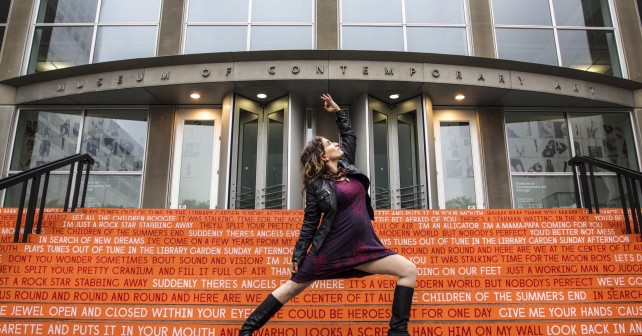The Sleet and the Flute
The Sutras teach us the grounding power of yoga asana
by Debi Buzil
Help! There’s a sleet storm out there and I need to get home! Chicago weather can be crazy—today we had weather advisories and blinding hail. I left the house only because I wanted to keep the commitment to see a dear friend visiting from out of town. We decided to meet at the Art Institute.
Art has a way of healing. Time and circumstance melt away as we wander the New Wing— modern art set in spacious halls filled with light. The hour speeds by. Now I need a moment to settle into my skin to face the challenge of getting home through a storm at dusk with eight-foot whitecaps crashing over Lake Shore Drive. The circumstances are epic. What can I pull out from my yoga backpack to see me through?
First, we leave the bustle of the New Wing and step into the exhibition “Gates of the Lord,” featuring 100 paintings inspired by Lord Krishna. Entering these galleries, I understand how art and devotion are intertwined. I hear the recorded sound of the bansuri, the wooden flute played by Lord Krishna. It is said that Krishna blows life or prana into our bodies, and we are simply his instrument. I am standing in front of apainting from the late 19th century, with Krishna surrounded by dancing women, palm trees and lotus flowers. It’s night in the painting, and there is a full moon. Here I take a few moments to stand in tadasana, or mountain pose, and simply breathe. On or off the mat, the practice of yoga lets us be secure and satiated in our own skin. There is no disconnect: our inner and outer worlds are easy, and this paradigm holds wherever we are.
Sthira Sukham sanam (Patanjali’s Yoga Sutra 2.46): The connection to the earth should be steady and joyful.
Hatha Yoga is a complete system, working to harmonize breath, body and the senses. Each of us encompasses both male (Ha) and female (Tha). We feel whole when we are balanced. Sthira Sukham sanam lets us know that the pose should be “steady and joyful” in both the hold and the transition of coming in and out of the posture. When our body is in alignment, our breath can flow and our awareness reflects the Divine Light. We are comfortable in who we are.
Mountain pose is the very first pose of B.K.S. Iyengar’s Light On Yoga. A simple standing pose. At the Art Institute I am feeling rooted and connected to the earth, accepting of her elements of challenge, namely the weather.
Sthira sukham āsanam has been pivotal to my practice and finding my edge, discovering my nature. I love yoga because its timeless wisdom is embedded so clearly in its practice. Although the practice of asana, or poses, is barely mentioned in the Yoga Sutras of Patanjali, just enough information is given to make the poses right. The pose should be steady, firmly rooted and cultivate a sense of joy.
My departing friend had to chase his hat all the way from Michigan Avenue to Wabash Avenue, only for it to end up in a puddle of slush. But I am prepared, joyful even. I am ready to leave downtown, comfortable and fully present, with the sound of the bansuri and deeply rooted inner strength guiding and protecting me.
Debi Buzil is the leader of Chicago-based Kirtan group Devi 2000. She is a longtime teacher and student, and a mother of two.























No Responses to “Sutra in the City”